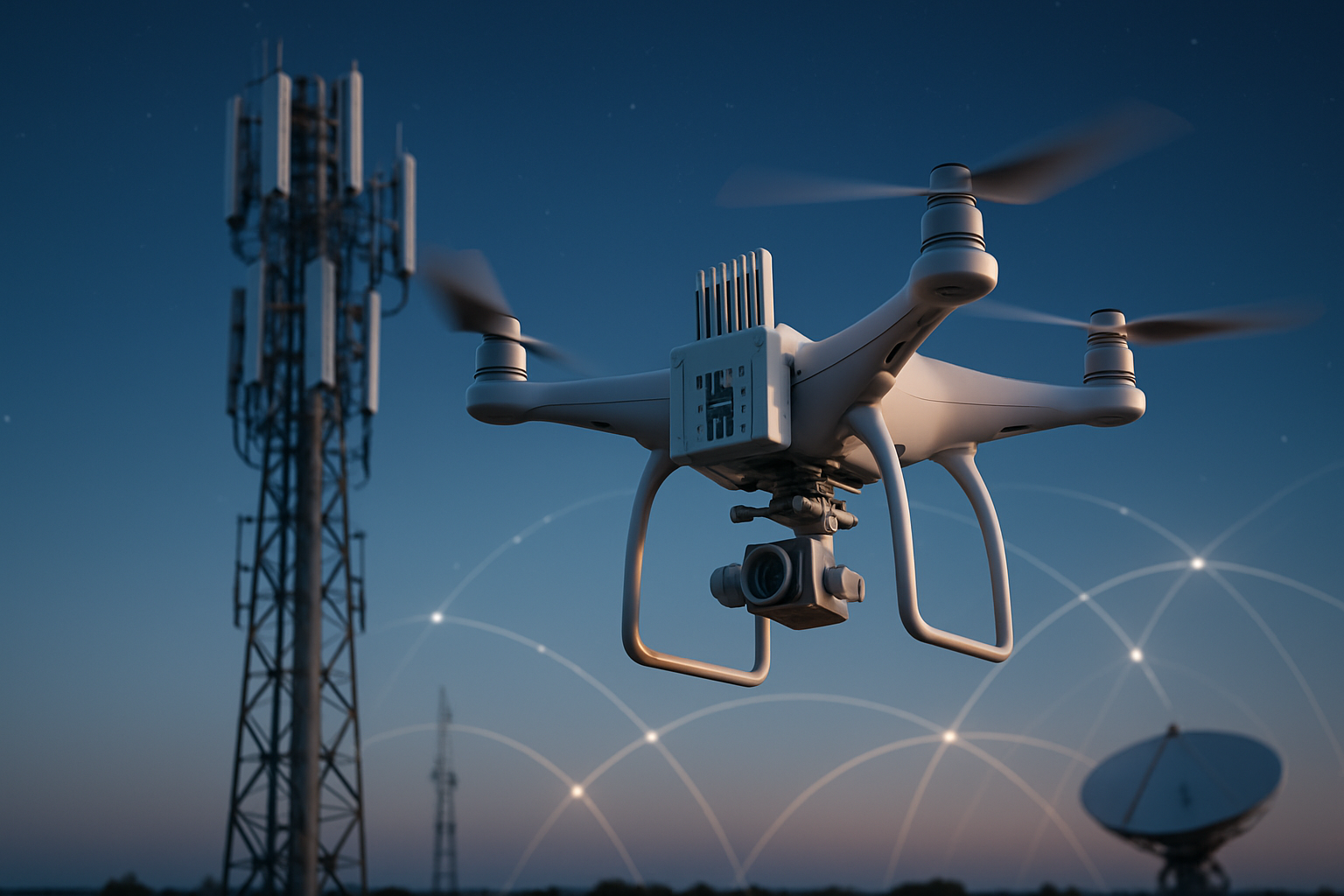Telecom Drones: Revolutionizing Network Maintenance and Emergency Response
Imagine a world where cellular networks are maintained not by ground crews, but by swarms of autonomous drones. This isn't science fiction—it's the cutting-edge reality of telecommunications maintenance. As network complexities grow and the demand for uninterrupted connectivity skyrockets, telecom companies are turning to the skies for innovative solutions.

The concept of using drones in telecommunications isn’t entirely new. Early experiments date back to the early 2010s when companies began exploring their potential for infrastructure inspection. However, it’s only in recent years that advancements in drone technology, artificial intelligence, and network capabilities have converged to make telecom drones a game-changing reality.
Transforming Network Maintenance
One of the primary applications of telecom drones is in network maintenance and inspection. Traditionally, checking cell towers for damage or malfunction required technicians to physically climb these structures—a process that’s both time-consuming and potentially hazardous. Drones can perform these inspections in a fraction of the time, with greater accuracy and safety.
These UAVs can capture detailed images and video of tower components, identify issues like corrosion or loose connections, and even use thermal imaging to detect overheating equipment. The data collected is then analyzed using AI algorithms, which can spot potential problems before they lead to outages. This proactive approach to maintenance significantly reduces downtime and improves overall network reliability.
Emergency Response and Disaster Recovery
When natural disasters strike, communication infrastructure is often among the first casualties. Restoring connectivity quickly is crucial for coordinating rescue efforts and keeping affected communities informed. This is where telecom drones truly shine.
In the aftermath of hurricanes, earthquakes, or other catastrophic events, drones can be rapidly deployed to assess damage to network infrastructure. More impressively, some drones are capable of acting as temporary cellular base stations, providing emergency coverage in areas where traditional infrastructure has been knocked out.
These “flying cell towers” can be operational within minutes of arrival, offering a lifeline of communication in critical situations. As recovery efforts progress, drones can continue to support by monitoring the rebuild process and ensuring new installations are correctly positioned and functioning.
Enhancing Network Planning and Optimization
Network planning is another area where telecom drones are making a significant impact. When expanding coverage or upgrading existing networks, operators need precise data about terrain, building heights, and potential signal obstructions. Drones equipped with LiDAR (Light Detection and Ranging) technology can create highly accurate 3D maps of areas, allowing for optimal placement of new cell towers and small cells.
Furthermore, these UAVs can conduct signal strength tests across wide areas, helping identify coverage gaps or areas of network congestion. This data is invaluable for network engineers, enabling them to fine-tune network parameters and improve overall performance without the need for extensive ground-based testing.
Regulatory Challenges and Future Prospects
While the potential of telecom drones is enormous, their widespread adoption faces some regulatory hurdles. Aviation authorities worldwide are still grappling with how to safely integrate UAVs into airspace, particularly in urban areas where telecom infrastructure is densest.
Current regulations in many countries restrict drone flights beyond the operator’s line of sight, limiting their range and utility for telecom applications. However, as the technology proves its worth, regulators are working on frameworks to allow more flexible operations while ensuring public safety.
Looking ahead, the future of telecom drones is bright and filled with possibilities. As 5G networks continue to roll out, the need for dense, precisely positioned small cells will increase—a perfect scenario for drone-assisted deployment and maintenance. Moreover, advancements in drone battery life and autonomous capabilities will extend their operational range and complexity of tasks they can perform.
The Human Element in a Drone-Assisted Future
It’s important to note that while drones are revolutionizing many aspects of telecom operations, they’re not replacing human workers. Instead, they’re augmenting human capabilities, allowing technicians and engineers to work more efficiently and focus on more complex tasks.
Telecom companies are increasingly investing in training programs to upskill their workforce in drone operations and data analysis. This shift is creating new career opportunities within the industry, from drone pilots to AI specialists interpreting the vast amounts of data these UAVs collect.
As we look to the future, the symbiosis between human expertise and drone technology promises to reshape the telecommunications landscape. From faster, safer maintenance to rapid emergency response and smarter network planning, telecom drones are set to play a crucial role in keeping our increasingly connected world running smoothly.
The skies above us are becoming as integral to our communication networks as the ground beneath our feet. As telecom drones continue to evolve and integrate into daily operations, they’re not just maintaining our current networks—they’re paving the way for the next generation of connectivity solutions.





